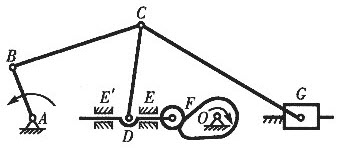Concrete is probably used more widely than any other substance except water, yet it remains largely unappreciated. "Some people view the 20th century as the atomic age, the space age, the computer age—but an argument can be made that it was the concrete age," says cement specialist Hendrik van Oss. "It’s a miracle material. " Indeed, more than a ton of concrete is produced each year for every man, woman and child on Earth. Yet concrete is generally ignored outside the engineering world, a victim of its own ubiquity and the industry’s conservative pace of development. Now, thanks to environmental pressures and entrepreneurial innovation, a new generation of concretes is emerging. This high-tech assortment of concrete confections promises to be per, lighter, and more environmentally friendly than ever before.
The concretes they will replace are, for the most part, p and durable, but with limitations. Concrete is sound under compression but weak under tension. Steel rebars are used as reinforcement, but make recycling difficult when concrete breaks down—and break down it inevitably will. Cracks caused by stress grow larger over time, with water forcing them open and corroding the rebars within. "When you put enough stress on it, concrete doesn’t work like we want it to. We’re asking too much of it now," says Mr. Van Oss. Concrete is also a climate-change villain. It is made by mixing water with an aggregate, such as sand or gravel, and cement. Cement is usually made by heating limestone and clay to over 2,500 degrees F. The resulting chemical reaction, along with fuel burned to heat the kiln, produces between 7 and 10 percent of global carbon-dioxide emissions.
"When we have to repeatedly regenerate these materials because they’re not durable, we release more emissions," says Victor Li, a civil and environmental engineering professor at the University of Michigan. Dr, Li has created a concrete suffused by synthetic fibers that make it per, more durable, and able to bend like a metal. Li’s creation does not require reinforcement, a property shared by other concretes that use chemical additives called plasticizers to reduce the amount of water in their composition. Using less water makes concrete per, but until the development of plasticizers, it also made concrete sticky, dry, and hard to handle, says Christian Meyer, a civil engineering professor at Columbia University.
"The engineer would specify a certain strength, a certain amount of water—and as soon as a supervisor turned his back, in would go a bucket of water," says Dr. Meyer of the time before plasticizers. Making per concretes, says Li, allows less to be used, reducing waste and giving architects more freedom. "You can have such futuristic designs if you don’t have to put rebar in there, or structural beams," says Van Oss. "You can have things shooting off into space at odd angles. Many possibilities are opened up." A more directly "green" concrete has been developed by the Australian company TecEco. They add magnesium to their cement, forming a porous concrete that actually scrubs carbon dioxide from the air.
"The planet’s been through several episodes of global warming before, and nature put carbon away as coal, petroleum, and carbonate sediments," says TecEco manager John Harrison. "Now we’re in charge, and we need to do the same. We can literally ’put away’ carbon in our own built environment." Another modification to the built environment is the carbon fiber-reinforced concrete of Deborah Chung, a materials scientist at the State University of New York at Buffalo. By running an electrical current through concrete, Dr. Chung says, tiny deformations caused by minute pressures can be detected. "You can monitor room occupancy in real-time, controlling lighting, ventilation, and cooling in relation to how many people are there," says Chung.
While experts agree that these new concrete will someday be widely used, the timetable is uncertain. Concrete companies are responsive to environmental concerns and are always looking to stretch the utility of their product, but the construction industry is slow to change. "When you start monkeying around with materials, the governing bodies, the building departments, are very cautions before they let you use an unproven material," Meyer says. In the next few decades, says Van Oss, building codes will change, opening the way for innovative materials. But while new concretes may be per and more durable, they are also more expensive—and whether the tendency of developers and the public to focus on short-term rather than long-term costs will also change is another matter.
When Van Oss says that "Whether the tendency of developers and the public to focus on short-term rather than long-term costs will also change is another matter"( last Paragragh), he probably shows that ______.
A.he has full confidence in the developers and the public in using new concrete
B.he is quite pessimistic about the future development of greener concrete
C.he is hostile to the attitudes of developers and the public
D.he feels that patience is necessary to wait for the change the public attitude

